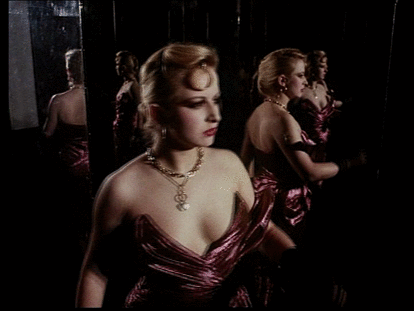
‘Werner Nekes was born in 1944 in Erfurt and studied linguistics and psychology in Freiburg. He then went to Bonn in 1964 where he was a head of the University Film Club and later chairman of the FIAG. He developed friendships with film directors, sculptors and painters. These included Dore 0., his companion and collaborator since 1967.
‘He began painting in 1965 with diverse materials and objects.
‘He started his practice of film with 8mm and went on with 16mm. He decided to free the film from narration and psychology and organized his films according to temporal units and structural systems.
‘In spring 1967, his films were rejected by the Kurzfilmtage of Oberhausen. Thus, Nekes organized a counter-event.
‘The same year in November, he came to Hamburg with Dore 0., whom he married the following month. He was a co-founder of the Hamburg cooperative of filmmakers and was a co-organizer of the « Hamburger Filmschau » in 1967. From 1973, he travelled all over the world to make seminars about film theory and retrospectives. He moved to Mülheim an der Ruhr in summer 1978.
‘He co-founded the Filmbüro NW in 1980 and the ICNC (International Center for New Cinema) in Riga in 1988.
His work was shown at major international museums and festivals, including The Museum of Modern Art New York, or the Kassel Dokumenta.
‘He was also a professor: from 1969 to 1972 and 2004 to 2006 at the Academy of Fine Arts (Hochschule für Bildende Künste) in Hamburg, from 1981 to 1982 at Wuppertal University, from 1982 to 1984 at the Kunsthochschule Offenbach, and, from 1990-96 at the Academy of Media Arts in Cologne.
‘Furthermore, Nekes compiled one of the most important private collections of artefacts documenting 500 years of pre-cinematographic experiments as well as developments in the early history of film, focusing on spatial and temporal principles of representation.
‘Nekes died unexpectedly at the age of 72 in January, 2017.’ — Ubuweb
____
Stills





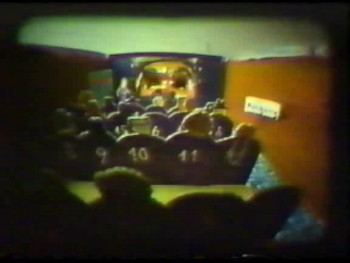











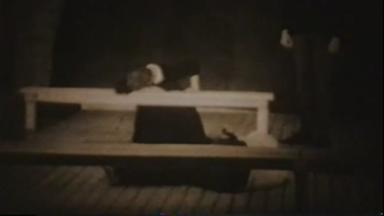











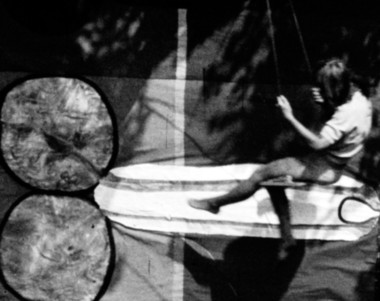

















____
Further
Video: Portrait: Werner Nekes @ ARTE
The Werner Nekes Collection
Whatever happens between the pictures: a lecture by Werner Nekes
Werner Nekes @ MUBI
WERNER NEKES ́ ULIISSES: LITERARY CITATIONS BETWEEN EYE AND BRAIN IN THE CINEMA OF LIGHT-ERATURE
Light Movement 3: Werner Nekes
Montage horizontal et montage vertical chez Werner Nekes
RUB YOUR EYES. From the Werner Nekes Collection
DVD: L’ENCYCLOPÉDIE DES ILLUSIONS VISUELLES PAR WERNER NEKES.
Schwellenfilm
Werner Nekes interviewed (in German)
Podcast: Legendärer Filmkünstler und Sammler: Zum Tod von Werner Nekes
___
Extras
W. Nekes Interview
Werner Nekas (1982) by Gérard Courant
Werner Nekes talk about and shows optical devices from his renowned collection.
Exprmntl: Werner Nekes
werner nekes estampas eróticas antiguas
______
Werner Nekes: A Pre-Cinematic Obsession
from AnOther Magazine
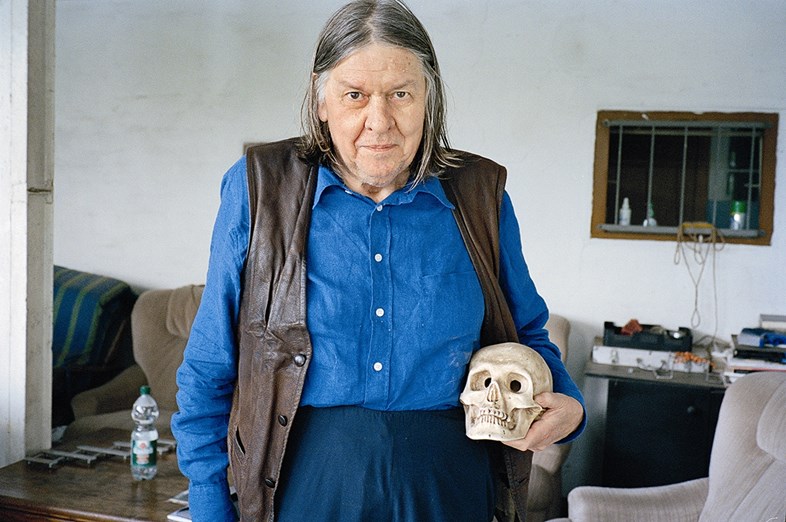
‘Magic lanterns, zoetropes and perspective boxes, carved handles that cast shadows of historical silhouettes, games of anamorphosis where distorted scenes are brought into definition with the help of a special mirror or lens… In Werner Nekes’s home, one enters a world of Cartesian uncertainty where everything seems to be, or harbors, an illusion until proven otherwise.
‘I met Nekes in 2001 at a Magic Lantern Society convention in Birmingham, where he stood out in his black turtleneck and stern moustache. Over the years we fitfully stayed in touch, and in 2004 I went to Eyes, Lies and Illusions, an exhibition at the Hayward that comprised hundreds of items from his collection, probably the largest of pre-cinematic devices in the world. But my dream was always to see it in situ.

‘Nekes’s home is situated on a motorway in the small town of Mülheim an der Ruhr. He leads me down a steep flight of stairs, through a room crammed with film stock and video cassettes, and then into his vast compendium of marvels from the Renaissance onwards. The first he shows me is William Cheselden’s Osteographia, an anatomical tome from 1733 displaying life-size representations of bones. Drawn with the help of a camera obscura, many of the plates depict skeletons in animated poses. As with most objects in Nekes’s collection, it’s this play between interiority and exteriority, at work in both magic and science, that’s part of the wonder.

‘He asks me what I’d like to see next. I look around, overwhelmed, with the sense that dozens of mechanical eyes stare back at me. I decide to pursue my own interest, magic lanterns. A large wooden one from Germany is the oldest in the collection, while his favourite is a Diableries brass lantern from around 1880. It is too fragile to handle – its images are hand painted on rhodoid and turn on a spool. Werner found it at auction in France – “Proust must have had such a lantern” – and claims only five were ever made.

‘Magic lanterns project images; perspective boxes keep theirs within. These little theatres of enigmatic depths often showed catastrophes such as the earthquake of Lisbon, and there’s a sense of a natural force, barely contained, bursting out of them.

‘So, where did it all begin? With thaumatropes, he smiles. In 1975, when Nekes was in Bilbao screening his films, he walked into a magic shop and asked the owner whether he had any “images that turn quickly”. The man brought out a handful of thaumatropes. These toys work on the principle of the afterimage and persistence of vision. Via a twirling motion, two sides of a painted disc merge optically, fusing into one: a parrot + an empty cage = an encaged bird; a woman in bed + a perching imp = an incubus. Although Nekes gave away his first thaumatropes to friends, something was triggered and he embarked on his passionate exploration.
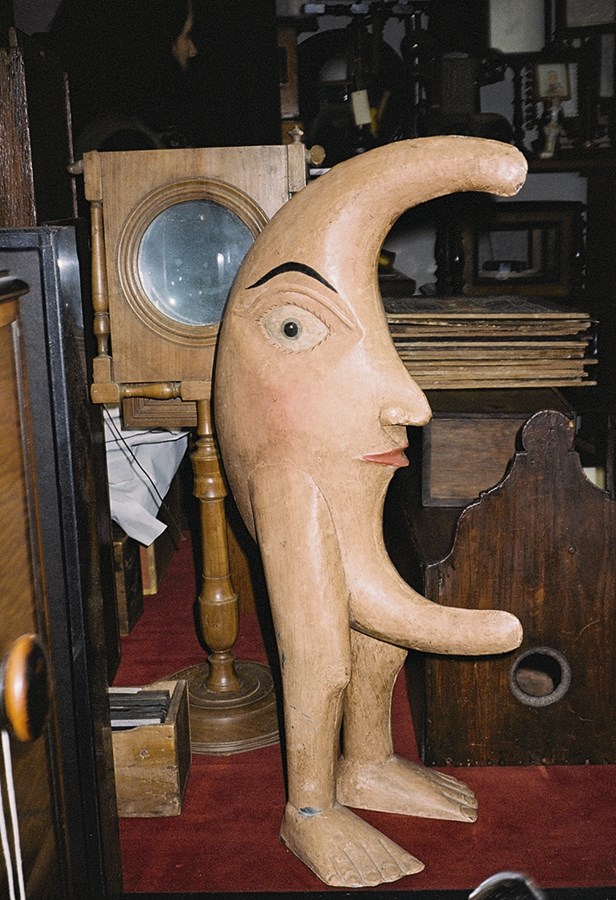
‘Since my arrival, I’ve been aware of a sinister profile on a shelf, another eye. Nekes tells me to turn it fully around. A grimacing face comes into view, with a painted red mouth, a cold blue gem of an eye, a dangling earring. But it’s actually an ear from whalebone, he says, from around 1600, found at auction in Germany.
‘Of the value of his collection, Nekes says: “It has the grammar of everything that is possible.” I think back on Cheselden – bones form our own grammar, our verbs, subjects, prepositions, they dictate how we move through the world. Somehow Cheselden’s book, I realise, is emblematic of Nekes’ collection – for everything, on shelf or page, can be animated – and everywhere, there are reminders of mortality, haunting and beautiful memento mori.’ — Chloe Aridjis
__________
12 of Werner Nekes’ 44 films
___________
Johnny Flash (1986)
‘Experimental filmmaker Werner Nekes describes in this, his first comedy the extraordinary career of the pop king of the Ruhr, „Johnny Flash“. This obstinate offspring of the Potzkothen family succeeds in becoming, thanks to the unflagging support of his mother, his manager and „that girl at Music Satellite“ a celebrated pop star. In the final sequence of this satire on show business and mother-son-love, Johnny and his mama wander off into an uncertain horizon, just as Charlie Chaplin once did at the end of his films …’ — Re: Voir
the entire film
_____________
Film Before Film (1986)
‘An exhilarating and amusing encyclopedic look at the “prehistory” of cinema. Werner Nekes charts the fascination with moving pictures which led to the birth of film, covering shadow plays, peep shows, flip books, flicks, magic lanterns, lithopanes, panoramic, scrolls, colorful forms of early animation, and numerous other historical artiffices. Working with these formats, early “producers” created melodramas, comedies, — as well as lots of pornography — anticipating most of the forms known today. Nekes probes these colorful toys and inventions in a rich and rewarding optical experience. Film Before Film is a bewildering assault of exotic (and sometimes erotic) images and illusions.’ — Kino Lorber
the entire film
___________
Uliisses (1982)
‘The film is a Homeric journey through the history of cinema. Its theme is based on the mythological Odysseus of Homer, the Ulysses of James Joyce, and the synthetic figure, Telemach/Phil, from the 24-hour-long piece «The Warp,» by Neil Oram. Werner Nekes combines these three figures, and he shows their stories within the history of «lighterature,» writing with light = film. His central theme, however, is visual language in of itself: Odysseus/Bloom is transformed into Uli the Photographer, Penelope/Molly into his model, and Telemach/Stephen into Phil, who begins his «Telemachia». The connecting of their three lives occurs during the course of a single day, in September of 1980, in Germany’s industrial Ruhrgebiet region, preceding the elections in the Federal Republic.’ — medienkunstnetz
Excerpt
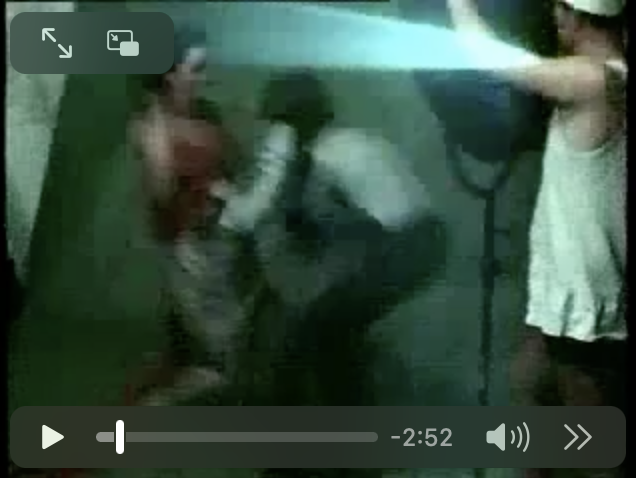
___________
w/ Dore O Beuys (1981)
‘Ostensibly, and as the title should hopefully have suggested, Beuys is a documentary on the German artist Joseph Beuys, a renowned figure in modern/contemporary art circles and one recently treated to a major retrospective at Tate Modern. This may put the film in the same category as, for example, Clouzot’s La Mystère Picasso, Rivers and Tides (on Andy Goldsworthy) or Right Out of History (on Judy Chicago), yet for each of their respective qualities these works offer essentially conventional records of their subjects. Beuys on the other hand takes a more conceptual approach and as a result perhaps shares a closer kinship with Gilbert and George’s contemporaneous feature The World of Gilbert and George. Here we find Beuys effectively given free rein – his is the only voice, indeed only sound, which we hear; he is the only person to appear onscreen, and in a single take at that; and even the opening credits seem unnaturally hasty in their efforts to move out of his way, having been written directly onto the celluloid and over in seconds – but crucially he doesn’t figure in the expected manner. Rather we find him facing a wall, with his back to the camera and placed in a spotlight so that he becomes almost a silhouette. Indeed, all we see are the hands behind his back and his equally stationary right ear, the rest of his body having been engulfed by a hat and sizeable coat. Under such circumstances he resembles nothing more than a big screen gangster, one in a firing line perhaps or an informant trapped in an intense spotlight. Moreover, the décor seem to match such an interpretation: the walls are painted white and are completely bare save for some electrical fittings which presumably no longer work; apart from Beuys himself the only other visible object is a radiator of standard persuasion. All told it appears that we’re in either a disused factory or some abandoned warehouse – either way it’s a stark environment, but also one teeming with atmosphere.’ — Cinema of the World
the entire film
____________
Hynningen (1973)
‘Hynningen (Swedish for ‘honey roof’) begins with long multiple exposures of a landscape with a clearing, opening up to the horizon. In the middle of the clearing there is a simple log cabin of the type characteristic of Northern Europe or Quebec. There are actors a man and a woman – at the window, at the doorway, strolling in the grass, doubled or even tripled by multiple exposure. Traces they have left at different moments of the day and in the changing light appear as gentle phantoms. If our varying perceptions would outlast changes in location we would experience a strong sense of continuity and of repetition. This visual counterpart to the imperfect tense in grammar is amplified by three high tones on a background of sinus curves. These gradually reach a higher pitch. But this isolated house, filmed in the almost silent density of a Baudelarian ‘Afternoon without end’, that seems as if made to accommodate peace and meditation, does it not attain a sudden, bewildering presence? If it is true that the term ‘to be’ originally means ‘to live’ and ‘to unfold’ but also ‘to dwell’, taking into account both Indo-European roots (es, bhû) as well as the Germanic ‘wes’, is one not, on seeing this dwelling place, invariably reminded of what Heidegger said about Man as ‘the keeper of his being’? Is this honey roof not the place of sheltered existence? No matter what Nekes himself thinks about his films and no matter how dominant the primacy of technique and structure, has he not with DIWAN begun erecting a metaphysical oeuvre, in which unto the cinema is bestowed the task of concealing and revealing existence as such? This is precisely the purpose that according to Heidegger constitutes Man’s oppressive privilege, Man who is subjected to the painful experience of boredom and of Angst. The end of the film is as cheerful as it is mysterious: we are led into the house with the honey roof. In front of a window, open as in the paintings of Magritte, the inhabitants walk, in multiple exposure, naked and silent…’ — L’Art Vivant
the entire film
___________
Makimono (1974)
‘The title refers to Japanese landscape painting on rolls. Furthermore it indicates the film’s theme, the balance of colors (blurred tones of blue, green and grey) and the type of montage that gives priority to continuity of development rather than to disruption and contrast. This continuity is achieved by dissolvings and double exposures and by extremely long pans. The rhythm accelerates: a meditation on landscape, which unfolds before the eye or is visually paced out, gives way to fluidity and pure motion, to a feeling of dizziness, the result of two contrasting camera movements. The world resembles a reflection in the water; then, however, rapid montage creates a calligraphy consisting of the quick and sharp black strokes of a Hartung painting, until one finally arrives at the glittering simplicity of an early movie where each frame still retains the weight of its individual tracks, of earth and of the world. Anthony Moore’s Soundtrack strikingly agrees with the images presented and by means of three consecutive modulations bestows unto them the structure of a concerto.’ — Helmuth Fenster, LArt Vivant
Excerpt
___________
Diwan (1974)
‘Diwan, a lyric anthology, an outdoor movie with people. With people living in the surrounding precious and very beautifully photographed nature, are neither more nor less than one part of it. What Nekes manages there with landscape, as a cunning and quote many fine artist in a medium that runs in time, as he defeated the time changed, by themselves for change of scenery uses, as it interferes with the laws of chronology through the rewind ability of the camera or destroyed, which is a compelling and highly aesthetic experimental company .(…)’ — Experimental Cinema
Excerpt
____________
T-WO-MEN (1972)
‘The film is divided into five parts differing in pictorial and musical structure. The plot, two women and their love for one another, is of secondary importance. An ingenious combination of stereoscopic images and montage of individual pictures make new qualities of perception accessible to the viewer. In the final part of the love scenes pictorial sequences and music build up to a delirious rhythm.’ — ReVoir
Excerpt
____________
w/ Dore O Abbandono (1966 – 1970)
‘Abbandono is composed of material from four years’ work. Maybe this is the reason why the film is one of Werner Nekes’ most expressive and most replete with imagery. ‘For and with Dore O.’ – the quality of the pictures is more lyrical and more vivid than usual. Their composition however typically corresponds to his other films in the manner in which they recur. We see Dore running in a snowscape, dissolving into white, a view of red shingled roofs, falling snow; a corridor of passage, filmed in green monochrome and in such a way that the objects defining it are visible only in parts. Dore walks down the corridor and Werner sometimes too. The sound is among the best that Anthony Moore has created; a sequence of gently undulating, poignant tones that rise to a sharply sounding crescendo and then die away”.’ — Tony Reif
the entire film
_____________
Ach, wie gut, daß niemand weiß (1967)
Trailer
____________
Gurtrug N°1 (1967)
‘I. Demonstration of divergent movements of 26 people and two horses.
II. Periodic interruption by a second filmic plane.
III. A segment of music repeated in a row.’ — Letterboxd
the entirety
____________
Tom Doyle and Eva Hesse: A Silent Movie (1965)
‘In 1965, Nekes made his first experimental films at the same time he met the painter Dore O., whom he followed to Hamburg in 1967 and married. This clip is from Nekes’ short film documenting Eva Hesse and her husband Tom Doyle at Doyle’s exhibition at the Scheidt Family home in Kettwig. This meeting would begin a long lasting friendship between Nekes and Hesse and eventually led to Nekes’ acquisition of key early works by the artist.’ — Christies
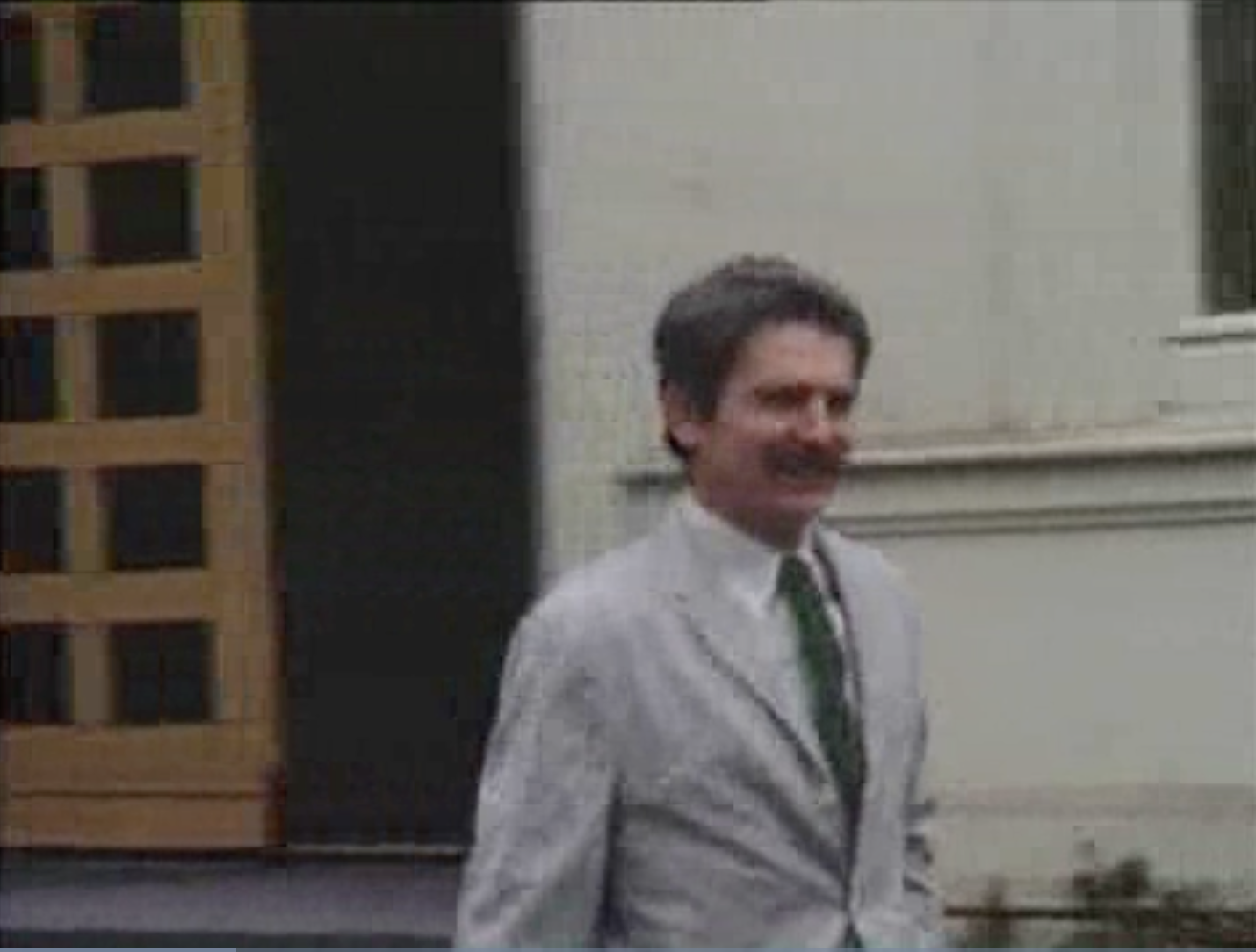
*
p.s. Hey. ** Dominik, Hi!!!! Well, let’s see … I was in Vienna and not doing event related stuff just basically for one not entirely full day, so I didn’t see a lot. I spent a bit of time at the really, really charming old amusement park, Prater. None of the rides were working when I was there, but it looked extremely fun. The center of the city looks kind of like what I imagined — elegant, kind of classy old buildings, very ‘Germanic’ looking. The city seemed pretty nice in general, hospitable. The people I dealt with there were all really cool and kind and stuff. It seemed good. What part of the city will you guys be living in? As soon as love gets ‘You Spin Me Round’ out of your head I’d ask him to get Guided by Voices’s ‘Face Eraser’ out of its loop in mine, even though I do love the song. Enough is enough though. How were your last couple of days? ** A, I think my only photos of that ex- are in LA and polaroid-only. It was only me in Vienna, but it was good. Zac is just back in Paris, and I’ll see him in the next couple of days, and presumably he will have the ARC with him when I do, but I will let you know. Wow, about the trigger warning. So it goes these days. I never got one of those, but I don’t think my publishers thought my books would reach normal people. And I guess they didn’t. ** Misanthrope, Hey, G. Yeah, thanks, it is cool that ‘I Wished’ is in German, and my publisher there makes such pretty looking books. And the event was sold out, so I guess I have fans there, which was surprising and obviously very nice. ** Sypha, Hi, James. Sounds super interesting: the trilogy. Breathing life/fire into a staid genre is an interesting goal, for sure. That was my idea back when I wanted to make a porn film, but it never happened, probably because I realised how hard that would be. ‘Hard’, ha ha. ** Kettering, Hi. Thanks, the trip was quite good. No, I didn’t get to the cemetery yet. I overestimated my free time. But I’m due to go visit a friend who lives right next to it imminently, so that’s in the cards. Curious if people have left things on Guyotat’s grave and what they would be, if so. The time I saw Sartre’s grave people had put metro tickets all over it for reasons unknown. ** Cody Goodnight, Hi, Cody. I’m decent, and you? They just showed ‘Polyester’ here with JW in person. Did they hand out the Odorama cards at your screening? Wait, you probably watched it at home. John Waters is a pal of mine, and he really is the nicest, kindest coolest guy ever. I would say my favorite John Waters film would be a tie between ‘Female Trouble’ and ‘Serial Mom’. I haven’t watched ‘Phantom of the Paradise’ in ages. I should, that’d be fun. Excellent day to you, sir. ** Bill, I don’t know that film ‘Queer Japan’. Huh. I’ll check around for a streamer or download. I remember back in the ’80s a very popular term gay guys used to talk shit about older queens was to nickname them Prunella. I think that’s only use of the word I’ve ever heard. It was fun in Vienna. And the couple cakes I ate were yum but very sweet. ** tomk, Hi, T. It was good, the trip. People seemed to really like ‘PGL’, happily. You were here? Wow. While I was gone? Sucks. A rave in a former train station … I don’t know about that. I’ll ask Zac. He goes out dancing sometimes, and he’ll probably know. Any progress on the work thing? ** David Ehrenstein, Hi. Murray Head is performing in concert here soon. I didn’t know he was still extant. I guess he had a bunch of hits in France at some point. ** _Black_Acrylic, Hi, Ben. Thank you yet again so much! Ha ha, yeah, I managed in a number of cases to replace the PhotoBucket-imprinted images with equivalents. Not in every case, obviously, but … Greatest day to you! ** Steve Erickson, I can imagine: draining. Obviously, keep treating your ankle with kid gloves. I think I’ve said this before, but the last time I saw ‘Lost Highway’ I felt like I knew exactly what could be cut out of the film to make it a masterpiece rather than a mostly amazing film with weaknesses. I, of course, don’t remember my imaginary edit anymore. ** Okay. In case you don’t know the super interesting films and general experimental film-related efforts of Werner Nekes, you have an opportunity to become at somewhat informed today. See you tomorrow.




 Now available in North America
Now available in North America 
Hi Dennis, thanks. How was Vienna? Ok I will finish up with JM and also put together some related stuff for that day and hopefully give some options and keep it easy and get that to you soon, is that the best for you? haha I’m a bit untethered at the moment, wrapping up at my job here while M started a job down south… and realising how burnt out the job had been making me. So a rethink is in order!
Love the idea of an ex’s photos only existing in physical form, and not being digitized… That’s great. Please keep me posted when you talk to Zac next and find out if he has it. FedEx just tried an attempted delivery again today and we got the same error, ‘incorrect address.’ The production designers have left a space on the back cover “_____” – Dennis Cooper, cause fingers cross! Thank you for your kindness for letting me know for peace of mind. Quite the mercury retrograde. Yeah, the Trigger Warning.. sigh, a sign of the times. Email me whenever.
Big D, Let me tell you, you have fans everywhere. EVERYWHERE! I tell ya.
Hmm, better to have one fan in every country or 195 in one country? The interwebs is saying there are 195 countries. This is an intriguing puzzle for me. Not really.
But yes, glad you had a swell time there.
Me, I’m just holding on until we get my mom’s teefs fixed. 😀
That’s where Life has brought me. While all the time I thought I was bringing Life somewhere.
Hi!!
I’m so glad you found Vienna nice! Our impressions are similar. Ah, the Prater, yes! I haven’t been there yet, but it’s certainly a plan. My mom loves photographing merry-go-rounds, and she’s planning to expand the project to include amusement parks, so she said it’s a must once we live there, haha. We’re gonna live in the 14th district, about 20 minutes from the Schönbrunn Palace. How did the event itself go?
Shit, let’s ask love never to let any song play in a loop in our heads from now on. Just to be safe.
The last couple of days were pretty uneventful on my end, to be perfectly honest. Just some work and SCAB emails (this submission period is unexpectedly busy and rich). I also found a movie called “Lilya 4-Ever,” which seemed like something I’d enjoy, so I’m planning to watch it today or tomorrow. Have you seen it?
Love teaching you how to play the organ, Od.
Werner Nekes is a new name for me, but he seems like a very cool guy. Will check out these YouTube links with anticipation.
My coming DVD rental is Deranged and I’m looking forward to it a great deal. Have you seen this? It does look like a young you’s sort of thing.
Right now the benchmark for “fantasy novels inspired by the Middle Ages/set in a medieval type setting” is George R.R. Martin’s A SONG OF ICE AND FIRE series, which in turn inspired the GAME OF THRONES TV show, and while I’m a fan, I can also see room for improvement (and indeed, over the years, there’s been a growing chorus of people who have begun to focus on some of the flaws of Martin’s worldbuilding, which normally would be nitpicking because this is, after all, a fantasy world, but the problem is that Martin himself likes to brag about his historical accuracy, so he kind of opens himself up for such criticism).
To wit: in Martin’s series much of the scales and logistics are completely out of whack. His castles tend to be crazily oversized, and the capital city of his world has a population of half a million people, despite being inspired by a time period where the biggest cities in the world tended to have populations of 50,000 people at most. His kings frequently field armies of 10,000 troops or more, which is vastly higher than most actual medieval armies and would require insane supply trains to keep them fed for extended periods of time. Childbirth in his series is often fatal, when in real life in the Middle Ages only around 2% of all childbirths resulted in the death of the mother. Some of his great families/houses have been around for 8000 YEARS and have never changed in all that time which is nuts because the longest lasting empire in our world, Ancient Egypt, was less than half that, like around 3,500 years or so. The eastern continent of his world is a bundle of lazy Orientalist cliches and stereotypes, and the barbarian hordes that are supposed to represent the Mongols are basically dumbed down to “they liked to ride horses and conquer cities” (which is a shame because the ancient Mongols had an especially rich and vibrant history/culture). So yeah, stuff like that.
Nekes’ work is quite fascinating. I always hope that one day my apartment will look like a Brothers Quay set, or Nekes’ house. I don’t know how I’d keep all those objects dusted though. Maryse Meijer showed me a couple photos she took in the Quays’ house, and it looks (yes) something like a Quay set.
The Prunella I ate at (casual Italian, very good pizza) is in Philadelphia. Queer Japan is pretty easily streamable here, but I don’t know about Paris.
Good to hear you enjoyed Vienna. I really have to get back there some day. Even the hardcore new music events serve good pastries, ahhhh.
Bill
My ankle is much better. It’s easier to go up and down stairs, and I walked 10 minutes each way to see GUARDIANS OF THE GALAXY 3. (The movie was a big mistake – 2 and 1/2 hours of ugly-looking bombast.) I plan to test my ability to take the subway to head to Rough Trade tomorrow.
Did you read about the Quietus’ financial problems? They’re running fewer articles than they used to, and they’ve completely abandoned film pieces.
The 3-hour fan edit of Lynch’s DUNE on YouTube has often been praised as superior to the released version. (While stuck at home last weekend, I saw the fan edit of Brian De Palma’s RAISING CAIN, which he liked so much that he now says it’s the official cut.) But when I read about fan edits, they tend to go in two directions: cutting the “slow,” “boring” parts or adding every minute of released footage back into the film, regardless of what either does to the rhythm and pacing.
Hi Dennis.
How are you? I’m doing well. How was Vienna? It seems like a charming city from how you’ve described it. I really love amusement parks myself. They’re just endlessly charming. Have you heard of the Ultravox song “Vienna?” I love it. I’m about to see Serial Mom in a theater tonight on a very rainy day. I’m with you. Serial Mom is probably my second favorite Waters film after Female Trouble. The man is just walking charisma. I just adore Phantom. It’s my favorite De Palma besides Carrie. I know he’s made better films, but those two have a special place in my heart. I watched Pinocchio yesterday and I just loved it. It’s so gorgeous and charming and even every. I sincerely wish Disney made more films like it. Why is it your favorite Disney film, Dennis? I’m curious. Have a great day or night!
Dennis, it’s been a while, what’s up? I must be close to the PS deadline. Nekes is new to me but exactly what I’m into nowadays. I’ve had a simmering interest in experimental film ever since I went to Temenos last year. I’ve been in a good groove despite the political insanity here. Daily life is a balancing act between a day job and a million and one things I’m doing outside of it. Took fun trips to Vienna, Poland/Berlin, Sinai desert, and Istanbul. The surprise highlights in Vienna were the dancing horses at the Spanish Riding School and the Globe Museum.